How to AI sows and improve conception rates
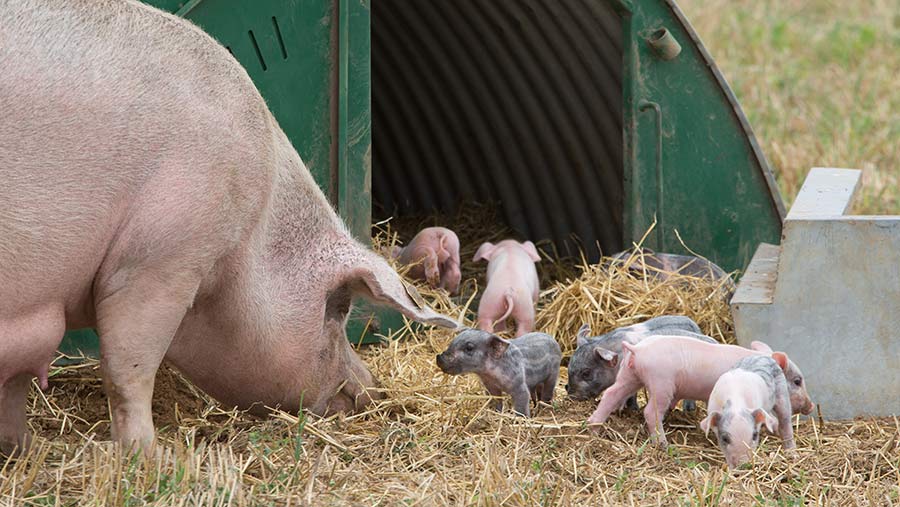 © Tim Scrivener
© Tim Scrivener Attention to detail during insemination is key to maximising conception rates in pigs. Ian Gillies, AI and genetics manager at Rattlerow Farms, offers some top tips on AI in sows.
One of the most important functions on a breeding unit is ensuring you get a good conception rate.
Ovulation in pigs occurs after approximately 70% of the standing heat period has passed, meaning correct heat detection is vital to ensure pigs are inseminated at least twice before ovulation takes place.
Sows should be fed ad-lib from wean to service. Additional sugar-based feed supplements can be used to help flush sows.
See also: Guide to maximising conception rates in gilts
1. Boar stimulation
Sows will usually come on heat between three and six days after weaning. For farmers weaning on a Thursday, this means Sunday and Monday is the time pigs will start displaying signs of heat and they should therefore have access to the boar to test for standing heat.
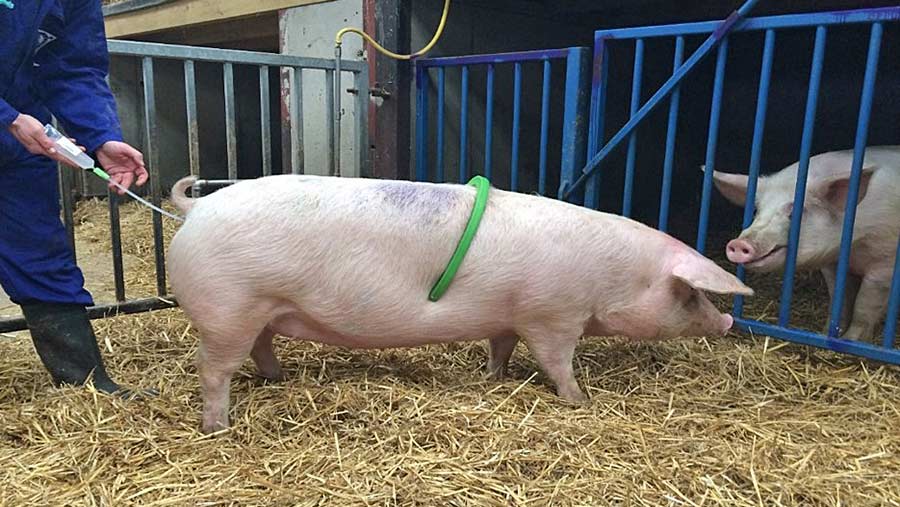
The best setup for indoor and outdoor producers is to have a designated mating area where the boar is housed. Sows should then be taken to that area.
They should not be able to smell or touch any boars on the way to the designated area as this can cause them to become stimulated and trigger standing heat too early.
Designated insemination areas should allow easy observation, and smell, sight, sound and touch between the boar and sow.
To stimulate sows:
- Day one to three post-weaning: Sows should receive full boar contact (touch, sight, sound and smell) for the first three days after weaning. A vasectomised or entire boar can be used. Fence line contact is adequate.
- Day three: The boar should be removed 24 hours before the start of oestrus detection to heighten the sow’s response to the boar on day four.
- Day four: Introduce the sow to the boar and test for the standing heat response.
If the sows stands on heat (the sow/gilt will stand for mating and service) when they are given access to the boar on day four they should be inseminated. You should test standing heat by applying back pressure at the same time as exposure to the boar.
The standing heat response usually lasts only 20-25 minutes after boar exposure.
2. Get the sows ready for insemination
- Mark the sows that have stood rigid and are ready for insemination.
- Use a “breeding buddy”. This is a tool that is placed on the back of sows to mimic the pressure of a boar during natural service. This helps keep the sow stimulated. When the sow is stimulated her cervix and uterine horns contract, helping transport the sperm to the sperm reservoir where they will wait for ovulation.
3. Insemination
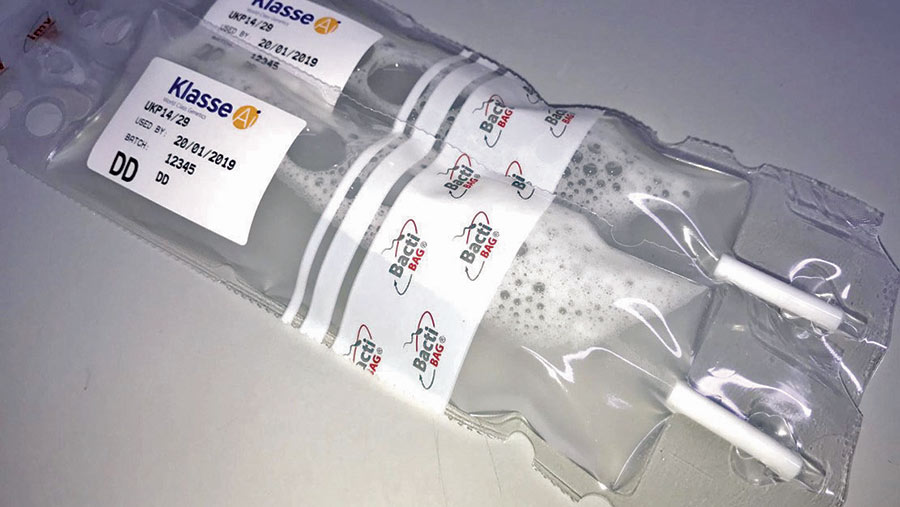
- Take the semen from the temperature-controlled cabinet. Semen should be stored at 17C (+–2C) and horizontally. Check you have got the right breed and check the use-by date.
- Wipe the outside and inside of the sow’s vulva before inserting the catheter using a clean, dry wipe or a specialist wet wipe. Do not use alcohol wipes as these can kill the sperm.
- If you are using a self-lubricating catheter you do not need to use any additional lubricant. If not, add lubrication to the catheter.
- Insert the catheter at a 30-40deg angle upwards until you feel it enter the cervix. At this point it will firmly lodge in place. Once it lodges just pull the catheter back slightly to test for a firm lock.
- Attach the semen dose and hold it up above the sow. The sow should start sucking in the semen. Tomato reels have become increasingly popular tools for hanging AI bags above and behind the sows.
- If the semen is not flowing in the first 3-4 minutes apply a bit of gentle pressure to the bag. If there’s an issue, reposition the catheter as the end of the catheter can sometimes get blocked by the cervix.
- Once insemination has finished leave the pigs in situ for about 20 minutes post-insemination to avoid any disturbance and for further stimulation by the boar.
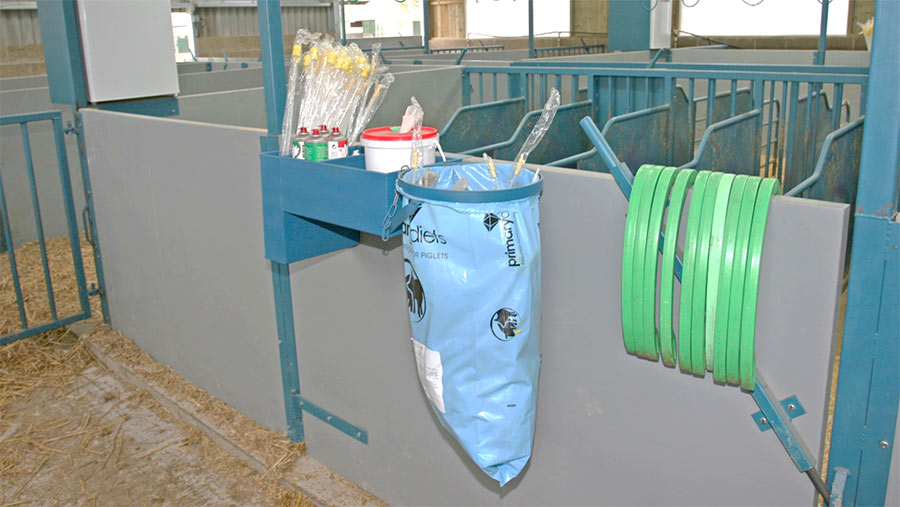
Semen storage
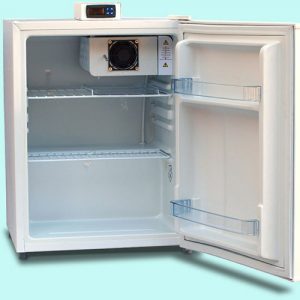
- Store semen horizontally in a fridge temperature of 17C (+-2C).
- Turn, or gently re-suspend, stored semen twice a day to keep it mixed with the protective diluent.
- The shelf life of semen is relatively short (6-10 days) and does vary so always check the use by date.
- Remove doses from the fridge only when they are required.
- if you need to transport the semen some distance from the fridge to the service area, use a temperature controlled, portable semen storage box. This can be useful in outdoor systems.
Signs of oestrus in pigs
- Pro-oestrus occurs just before oestrus and lasts about one day. Signs includes swollen and reddened vulva, watery discharge from vulva, increased restlessness, mounting other females.
- Oestrus lasts for one to three days with ovulation often occurring late during the second day of standing heat.
- Signs of oestrus include vulva appears normal (redness subsides), sticky discharge from vulva, tail sticks up while standing and flicks up and down, reduced appetite, pricked ears, standing with arched back, standing rigid if mounted, very vocal with long grunts.

